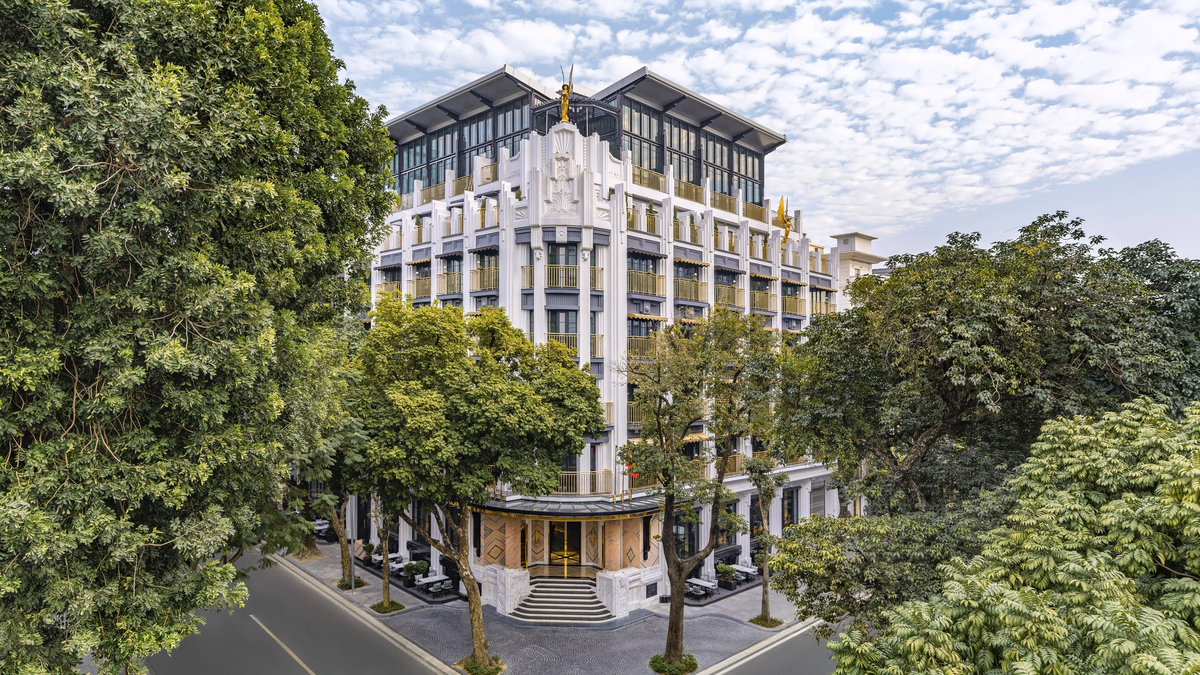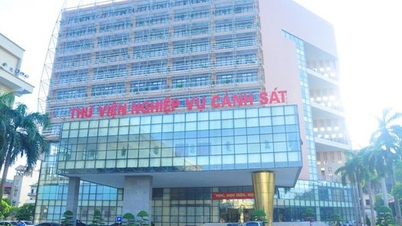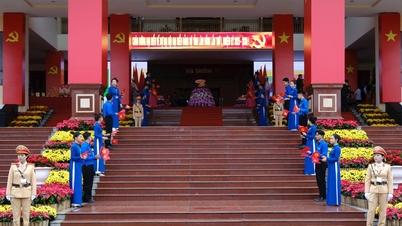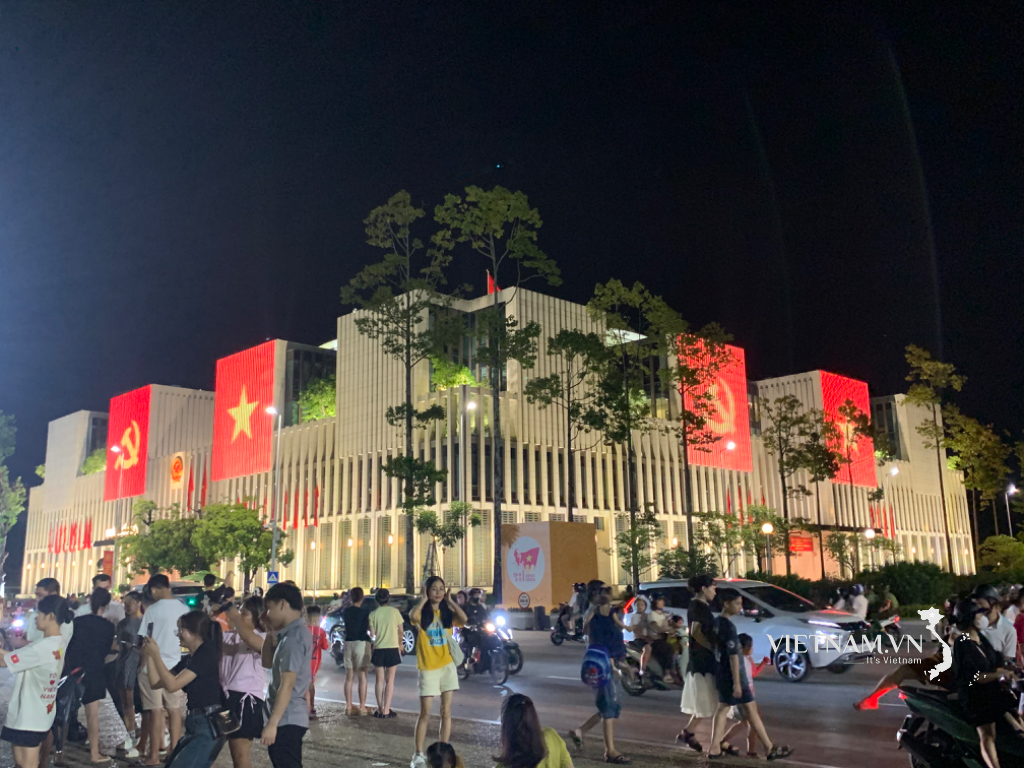Ho Chi Minh City today is at a completely different level, position and strength than before, requiring truly breakthrough solutions to fully exploit its strength and advantages in scale. And when the City has confidence and national aspirations, that is the advantage in action.
Bringing the dream of a more beautiful and developed Ho Chi Minh City
Associate Professor Dr. Tran Hoang Ngan shared that he has been attached to Ho Chi Minh City since 1970, and has witnessed every step of the city's transformation for more than half a century. He understands every breath of the city, from small alleys to large boulevards, from the difficulties of the subsidy period to the aspiration to rise to modernity today.

According to Associate Professor Dr. Tran Hoang Ngan, Ho Chi Minh City deserves to become an international megacity, leading the country in innovation and sustainable development. (Illustration photo: Luong Y)
" With a strong love and belief in this dynamic land, I always cherish a dream: Ho Chi Minh City will become more and more beautiful, more civilized and more developed. When I became a lecturer at the University of Economics Ho Chi Minh City, I had many opportunities to study and exchange abroad. Those trips planted in me many dreams about the future of the city," said Mr. Tran Hoang Ngan.
He said that every time he sets foot in a developed city, he secretly hopes that one day Ho Chi Minh City will also achieve that stature.
In Singapore, he was overwhelmed by the modern, green, clean and tidy city. In Thailand, he was impressed by the world-class tourist centers. In Canada, he admired the modern transportation infrastructure, with river tunnels, bridges and efficient metro lines.
In the UK, during his internship at the London International Finance Centre, he dreamed that one day Ho Chi Minh City would also have a regional financial centre. And when he visited Korea and Japan, seeing the civilised metro systems, he wished the city would soon have similar projects.
And now, according to him, many of those dreams are gradually coming true.
According to Mr. Ngan, Ho Chi Minh City has all the conditions for remarkable development, from people to geographical location, infrastructure and economic potential. The city has hundreds of institutes, universities, large hospitals, leading research and health care centers. This is a favorable arrangement - a rare opportunity for a breakthrough.
In addition, industry and logistics are becoming two important growth pillars of Ho Chi Minh City, with nearly 100 industrial parks and export processing zones, contributing about 35% of the city's GRDP. The logistics system is also developing strongly and modernly, with major hubs such as Cai Mep - Thi Vai port cluster and the upcoming Can Gio International Transit Port, bringing Ho Chi Minh City closer to the goal of becoming the leading logistics center in the region.

A series of infrastructure projects are being invested in to make the dream of Ho Chi Minh City becoming an international megacity come true. (Photo: Thy Hue)
"Ho Chi Minh City has it all - potential, people, position and aspirations. If we have a strong enough mechanism and the consensus of the whole system, I believe that the dreams of the past will no longer be dreams, but will become reality. This city deserves to become an international megacity, leading the country in innovation and sustainable development," Associate Professor, Dr. Tran Hoang Ngan affirmed.
Historic opportunity for Ho Chi Minh City to reshape its future
According to Architect Ngo Anh Vu, Director of the Ho Chi Minh City Institute of Construction Planning, when comparing Ho Chi Minh City with major cities in the Southeast Asian region, it can be seen that the city has a significant geographical scale and strategic location, but its economic potential has not been exploited commensurate with its available advantages.
In terms of area, Ho Chi Minh City is equivalent to about 87.2% of Bangkok (Thailand), 85% of Manila (Philippines) and 95.6% of Jakarta (Indonesia), but the economic scale is only about 17-30%, labor productivity is 11-37% and urbanization level is 50-90% compared to these cities.
This shows that Ho Chi Minh City has "a huge room for development". The city needs to take advantage of the combined model, in which Ho Chi Minh City (old) continues to play the role of the leading economic, financial and service center of the country; Binh Duong area is a bright spot in industry and investment attraction; Ba Ria - Vung Tau is a center for logistics, energy, oil and gas and sea and island tourism.
When these three areas are connected by modern transport infrastructure and logistics supply chains, a new economic dynamic region will be formed, capable of competing with megacities in the region.

Ho Chi Minh City is facing a historic opportunity to reshape its future. (Illustration photo: Luong Y)
" We can imagine, we can think of a high-tech product researched and designed in Ho Chi Minh City, mass-produced in Binh Duong and exported around the world through Cai Mep - Thi Vai port. That is the most effective development model, connecting from research, production to global consumption," Mr. Vu affirmed.
He also proposed a master plan vision for Ho Chi Minh City, in which the city needs to re-plan the urban and industrial space development strategy towards the specialization of each functional area. Specifically: industrial production area associated with urban and innovation; high-tech and research and development zone; financial and technology center; logistics and free trade zone associated with Cai Mep - Can Gio port cluster; and tourism area, marine and island ecological urban area.
"Ho Chi Minh City is facing a historic opportunity to reshape its future. Today's planning will determine the shape of the city in the next 30 to 50 years," Mr. Ngo Anh Vu emphasized.
Sharing the same aspiration, Mr. Nguyen Ngoc Hoa, Chairman of the Ho Chi Minh City Business Association (HUBA), said that the new Ho Chi Minh City with its expanding scale and outstanding development potential is possessing unprecedented advantages.
The city has reached the stature of a multi-centered metropolis, covering three important economic pillars: the old downtown area is a commercial and service center, which will become an international financial center in the near future; Binh Duong is an industrial capital; and Ba Ria - Vung Tau is a center of logistics, industry and sea tourism.

Industry and logistics are two pillars of strong growth in Ho Chi Minh City. (Illustration photo: Luong Y)
The big advantage is that Ho Chi Minh City enterprises are being strongly supported by new macro policies. Along with Resolution 68 on private economic development, Resolution 98 on specific mechanisms for Ho Chi Minh City, which is being proposed for amendment, will be a "launch pad" to help enterprises maximize their potential, expand investment and deeply integrate into the global value chain.
The business community recommends that the city government should intervene more quickly and decisively. After the merger period, the authorities must quickly play their role in advising and supporting businesses, accompanying businesses, and helping the business community seize new opportunities... This is the key factor for Ho Chi Minh City to affirm its position as an economic locomotive.
5 development pillars for Ho Chi Minh City to break through
According to Dr. Tran Du Lich, to truly make a breakthrough, Ho Chi Minh City must have fundamental breakthroughs in mechanisms, finance and public investment. The city should reshape its economic space, integrating with Binh Duong and Ba Ria - Vung Tau, to form a unified dynamic region.
He proposed five pillars for development. The first is to exploit the industrial belt associated with deep-water ports and a transportation system of about 50,000 hectares, helping the city participate more deeply in the global supply chain.
The second is to develop Can Gio international transit port and a synchronous logistics system, forming a closed supply chain, enhancing competitiveness in the region.
The third is to build an international financial center associated with the development of digital financial markets, derivatives markets and free trade zones, where new mechanisms can be tested, creating an environment to attract global capital flows.
Fourth is to promote urbanization and sustainable real estate development, forming industrial and service corridors to meet the needs of 14-20 million people in the future.
The fifth is to strongly develop eco-tourism, culture and international conferences and exhibitions, especially in Can Gio and surrounding areas, gradually turning Ho Chi Minh City into a regional tourism center.
Source: https://vtcnews.vn/tp-hcm-dang-dung-truoc-co-hoi-lich-su-de-tai-dinh-hinh-tuong-lai-ar970231.html


![[Photo] Standing member of the Secretariat Tran Cam Tu works with the Standing Committee of the Party Committee of the Ministry of Health](https://vphoto.vietnam.vn/thumb/1200x675/vietnam/resource/IMAGE/2025/10/10/1760079818773_image-4-6972-jpg.webp)


![[Photo] Prime Minister Pham Minh Chinh attends the Patriotic Emulation Congress of Hanoi city](https://vphoto.vietnam.vn/thumb/1200x675/vietnam/resource/IMAGE/2025/10/10/1760078918257_dsc-2008-jpg.webp)
![[Photo] "Exposing letters" in the flood center of Lang Son](https://vphoto.vietnam.vn/thumb/1200x675/vietnam/resource/IMAGE/2025/10/10/1760080117518_ndo_br_z7101324112737-07cd4d1c01801a8ccf4ae0cbaf31c4a3-507-jpg.webp)


















































![[Photo] President Luong Cuong presents decisions on conferring titles and appointing Vietnamese Ambassadors](https://vphoto.vietnam.vn/thumb/402x226/vietnam/resource/IMAGE/2025/10/10/1760082105623_image-1.jpeg)





































Comment (0)